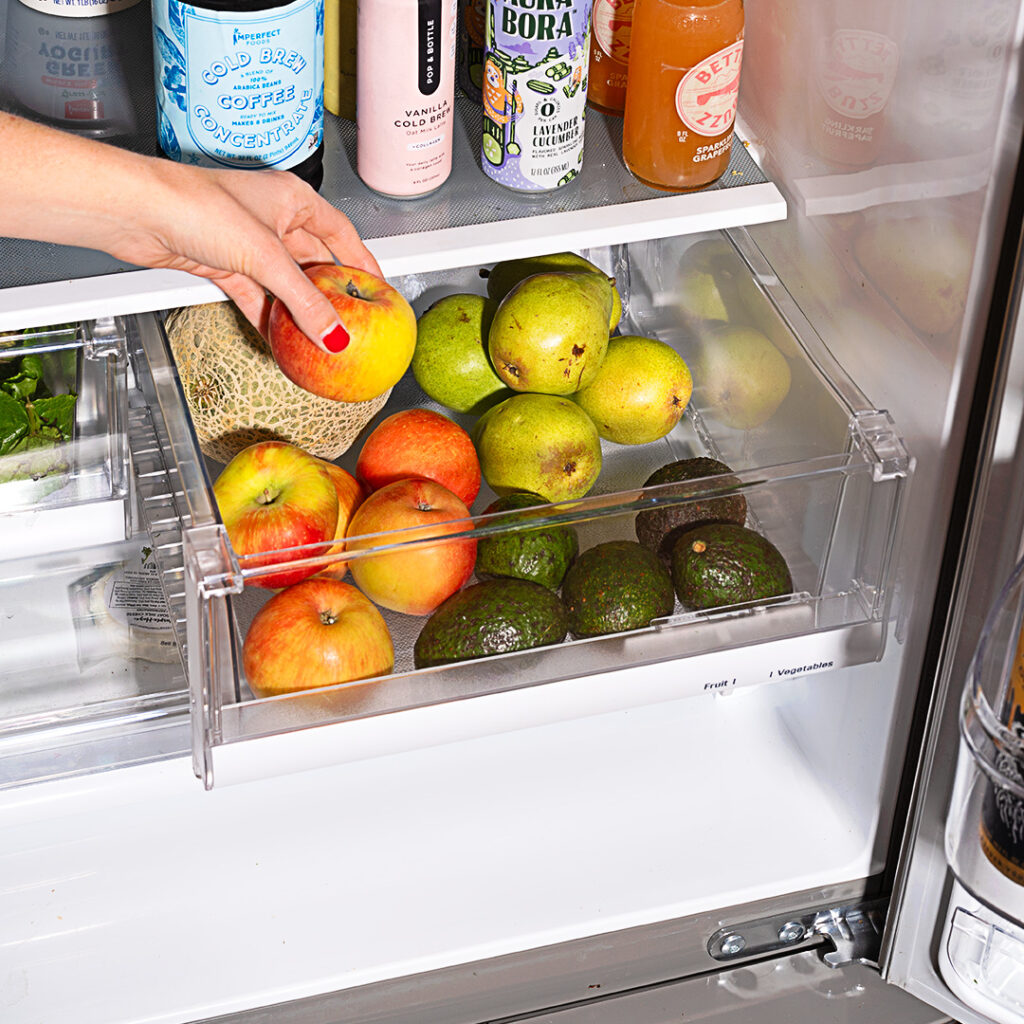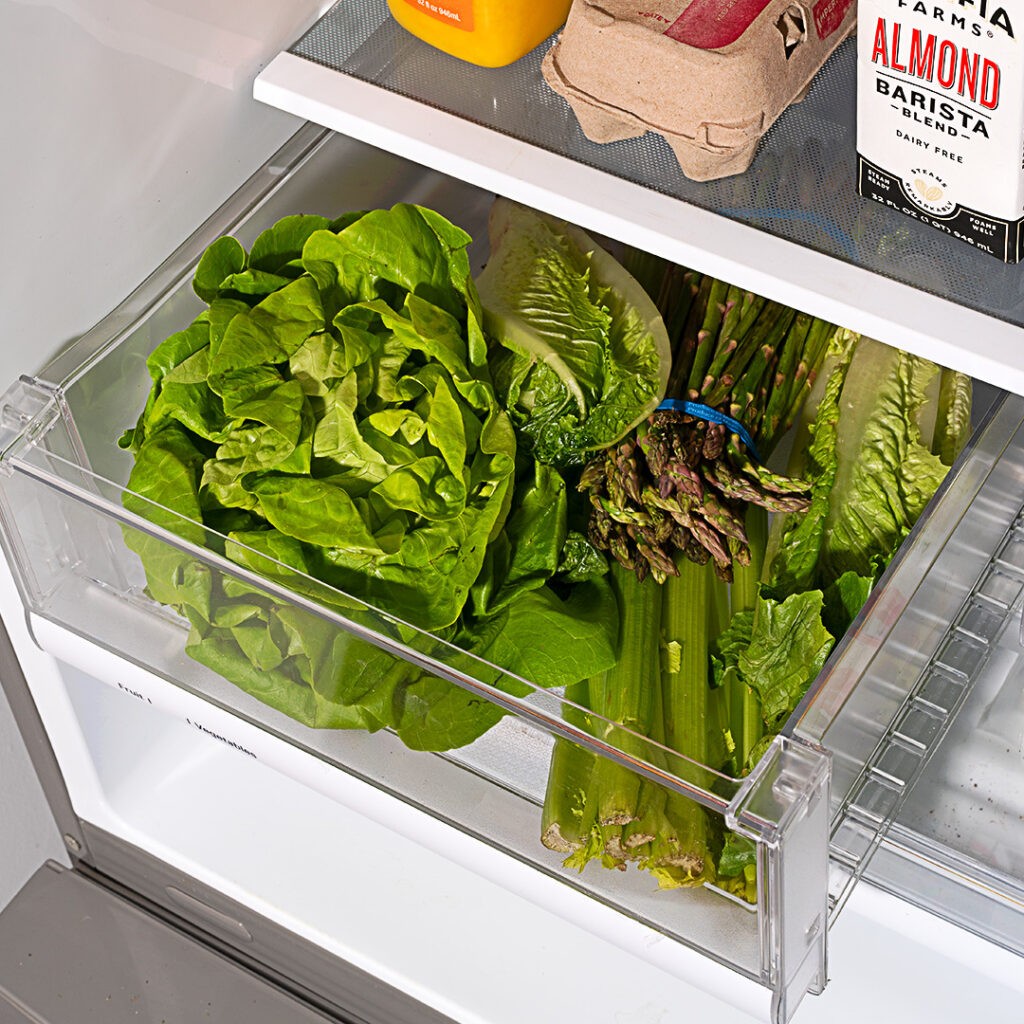
If you see your crisper drawer as more of a Pandora’s Box than a treasure trove, you’re not alone. We know the feeling, so we set out to find an organizational fix. The good news is that learning to love this corner of your fridge comes down to just three key factors—which fruits and veggies should and shouldn’t go in the crisper drawer, how to store ’em, and knowing the difference between high- and low-humidity produce.
What does a crisper drawer do?
Under the right conditions, your crisper drawer keeps produce—you guessed it!—crisp, while possibly keeping it fresher for longer, too. And it all comes down to humidity.
So what’s the deal with the two produce drawers?
If your crisper drawer has a sliding divider or is two separate drawers altogether, you’re likely able to change the humidity settings for each with a simple dial or vent switch. That’s because it’s easier to keep produce fresh and happy when it’s stored based on its preference for either high- or low-humidity. Once you assign a side (or drawer) to each group, what to store in each comes down to how gassy it is, essentially:
The Low-Humidity Zone: Its low airflow makes it a great hangout for ethylene-producing fruits and vegetables.
The High-Humidity Zone (no airflow): No airflow protects ethylene-sensitive fruits and vegetables from ripening too fast or unevenly. It’s ideal for leafy greens, too!
If you can’t change the humidity and you only have the one crisper drawer, that’s fine, too! Just know that it’s high-humidity by default, which makes things a bit different. If this is the case, reserve your crisper drawer for your ethylene-sensitive fruits and vegetables and store your ethylene producers according to their preference between fridge or counter, being mindful of which fruits and veggies can’t be stored together.

Do you need to separate fruits and veggies?
First things first: A crisper drawer isn’t a fruit and veggie catch-all. There are certain fruits and vegetables that should go on a fridge shelf instead of in the crisper drawer, and also some fruits and vegetables that shouldn’t be stored in the fridge at all.
Another thing to pay attention to isn’t just where it’s stored, but how it’s stored to extend its shelf life and cut down on food waste. It truly is a matter of comparing apples and oranges; how to store apples (in the crisper drawer, in a plastic bag) is different from how to store oranges (in the crisper drawer, loose).
Keep reading: The Ultimate Fresh Produce Storage Guide
Why are crisper drawers transparent in some fridges and opaque in others?
This is simply a design choice—transparent drawers let you see the contents without having to open them. Lots of fridges, especially ones on the vintage side, have opaque drawers that work just as well as see-thru ones as long as you keep tabs on what’s inside ’em.
Get your fresh produce delivered with Misfits Market

Comments (2)
Love all the hints!
So glad you found them helpful, Becky!